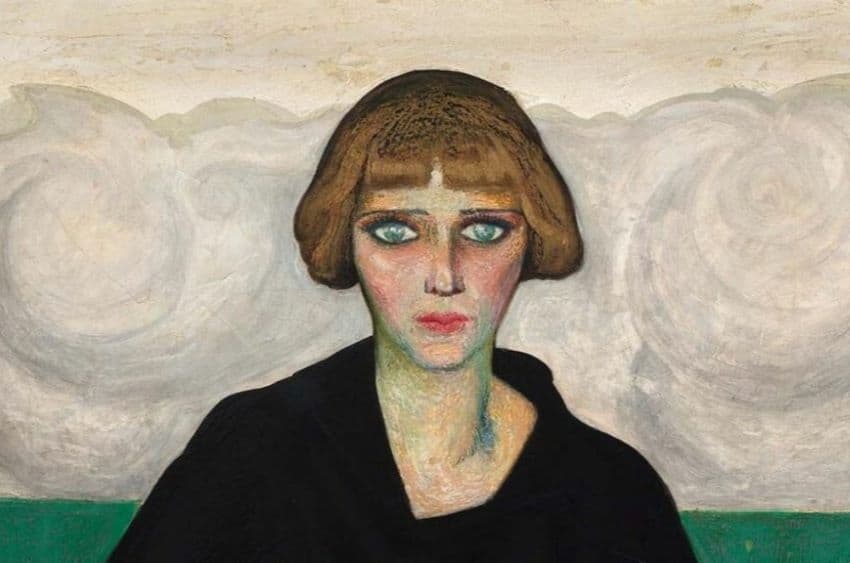5 Mexican female artists who are not Frida Kahlo

Frida Kahlo is Mexico’s most acclaimed female artist and one of the most recognized in the world. Born in Mexico City in 1907, she produced 143 paintings exploring gender, class, race, and Mexican society. She married muralist Diego Rivera, and together, they became a reference for art in Mexico.
But beyond Frida, Mexico has many other female artists are also worth exploring and recognizing. Whether it is for their poems, films, books, paintings, or extravagant lifestyles, these Mexican women have left a mark on their field while re-shaping the role of women in Mexican society.
Nahui Olín (1893-1978)
Poet, painter, feminist pioneer, muse, and model of 20th-century Mexican art, Nahui Olín is one of the most prominent and controversial female figures in Mexico’s art scene. The artist’s paintings depicted romantic scenes and country landscapes, delving into sensuality and eroticism in the Naif style.
Born in Mexico City as Carmen Mondragón, she was raised in a wealthy and religious family but spent her formative years in Paris.
Upon her return to Mexico and a failed marriage with artist Manuel Rodríguez Lozano, she changed her name to Nahui Olín (“the fourth movement of the sun” in Náhuatl) influenced by her affair with Mexican artist Dr. Alt. During their relationship, Nahui’s poems and paintings gained notoriety for their transgressive and unconventional content.
After turbulent romances that led to depressive and self-destructive behaviors, Nahui Olín died a pauper in Mexico City. She spent her last years teaching painting at an elementary school, reportedly living with her cats and dogs in her family mansion.
Antonieta Rivas Mercado (1900-1931)

Daughter of renowned architect Antonio Rivas Mercado — creator of Mexico City’s iconic Angel of Independence monument – she is remembered as one of the most influential figures in Mexico’s cultural landscape.
Friends with Nahui Olín, Diego Rivera, Frida Kahlo, Manuel Rodríguez, and many other artists and intellectuals of the time, she became a member and patron of Los Contemporáneos (The Modernists), a group of young Mexican intellectuals, writers and artists who disseminated the ideas of Europe’s avant garde.
With Los Contemporáneos, she financed and helped create the first experimental theater in Mexico City, Teatro Ulises. She also financed and founded the Mexican Symphony Orchestra and was editor and English translator of notable books by Latin American authors such as Xavier Villaurrutia, Gilberto Owen, Federico García Lorca, and Andrés Henestrosa.
She also founded the first Department of Indigenous Affairs at the Mexican Education Ministry and later became actively involved in politics by financially supporting the presidential campaign of former Education Minister José Vasconcelos.
Her cultural patronage helped shape modern Mexico until her death, when she took her own life inside Notre Dame Cathedral in Paris.
Aurora Reyes (1908-1986)

Born in Hidalgo del Parral, Chihuahua, Aurora Reyes was Mexico’s first woman muralist. She was also a renowned intellectual, poet, writer, social activist, and feminist. Her work depicted the moment’s historical, political, and social events addressing issues like education, social struggle, and gender.
Unlike her male counterparts (José Clemente Orozco or Diego Rivera) she was never commissioned by the government to create public art due to her activism for women’s rights and her support for the doomed student protest movement of 1968.
According to her grandson Héctor Godoy, her activism had a negative impact on the preservation of her cultural legacy. The artist painted seven murals of which only six survive. Although there have been attempts to recover her work and modern governments have recognized her as Mexico’s first women muralist, most of her work is yet to be restored.
Elena Garro (1916-1998)

Playwright, novelist, poet, dancer, and choreographer Elena Garro was a prolific artist born in Puebla but grew up in Iguala, Guerrero. She is often dubbed “The Mother of Magical Realism.”
Her writing stands out as fantastical and original due to its ability to challenge established traditions and taboos. She addressed femicide and sexual violence and introduced the worldview of provincial towns, peasants, and indigenous people during a time when these groups were often overlooked in literature.
Famous works include Los Recuerdos del Porvenir, Andamos huyendo Lola and Testimonios sobre Mariana (winner of the Grijalbo literature prize in 1981)
Many remember her for her marriage to poet and Nobel Prize winner Octavio Paz. In her book Memorias de España. 1937, she said her marriage was full of prohibition, resentment, professional jealousy, and violence.
Garro lived in exile with her daughter, Helena, for 22 years due to accusations – which she denied – of having been involved in the orchestration of the Tlatelolco Massacre of 1968 (the same event that spelled the end of Aurora Reyes’ influence). She died aged 77 in Cuernavaca, Morelos.
Pola Weiss (1947-1990)

Born in Mexico City, Pola Weiss was the first student to graduate with a video art production from the National Autonomous University of Mexico (UNAM).
A pioneer of video art and dance in Mexico, Pola Weiss’s life was marked by a constant struggle against patriarchy, artistic norms, and the stigma of mental illness that ended with Pola taking her own life.
Her work focused on revealing the female body differently from what was imposed by the beauty stereotypes of the time. However, she faced discrimination in Mexico over her art – it was not understood, exhibited, or valued as much as in Europe and the United States, where they considered her the most important video artist in Latin America.
To preserve Pola Weiss’s contributions to the visual arts, the artist’s sister, Kitzia Weiss, and husband, Fernando Mangino, donated 3,000 items to the MUAC’s Arkheia Documentation Center, including documents, photographs, slides, and negative stripes.
Weiss’s life inspired a documentary film by Alejandra Arrieta called Pola Weiss.
Gabriela Solís is a Mexican lawyer based in Dubai turned full-time writer. She covers business, culture, lifestyle and travel for Mexico News Daily. You can follow her life in Dubai in her blog Dunas y Palmeras.
Source: Mexico News Daily

